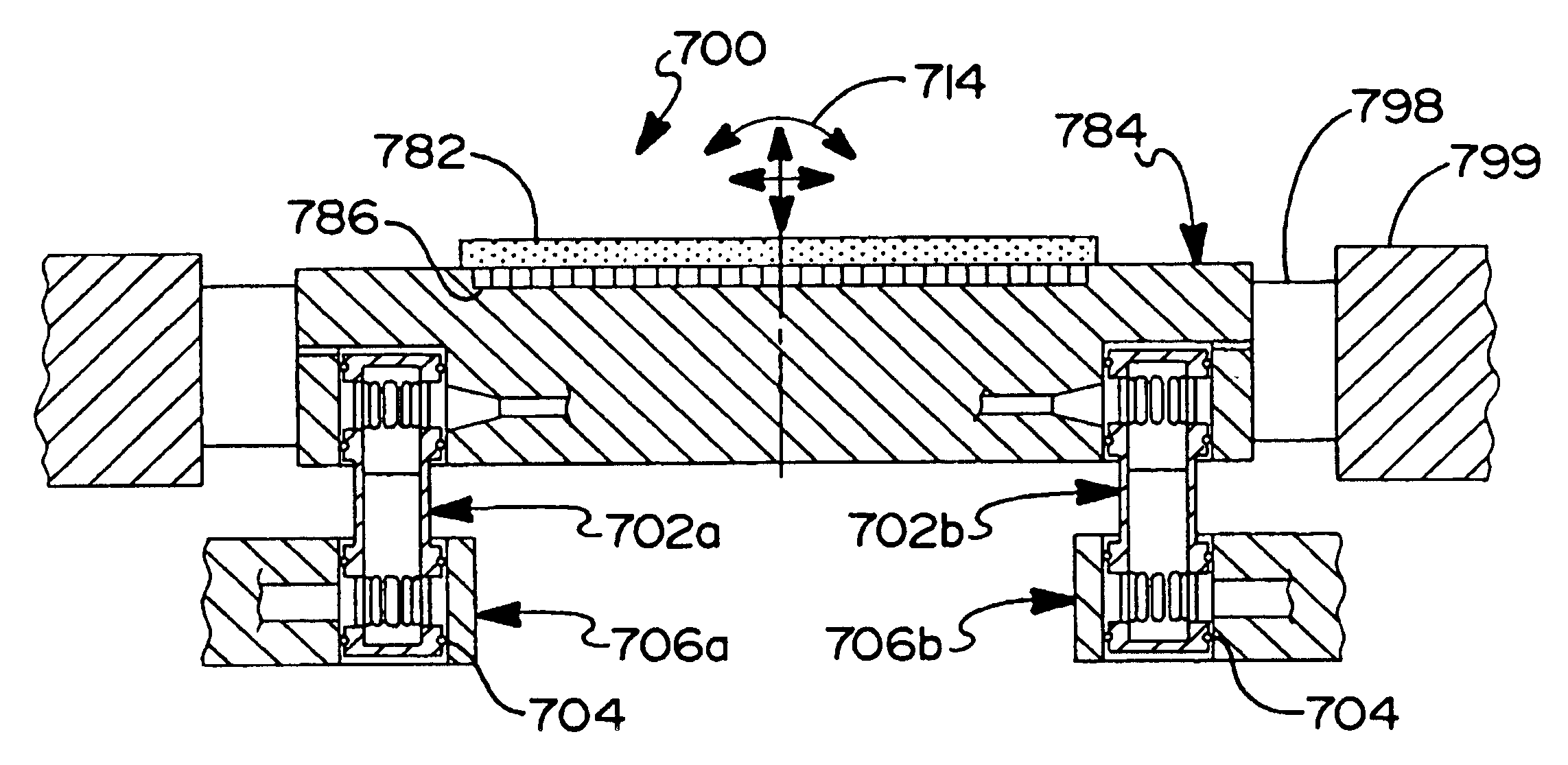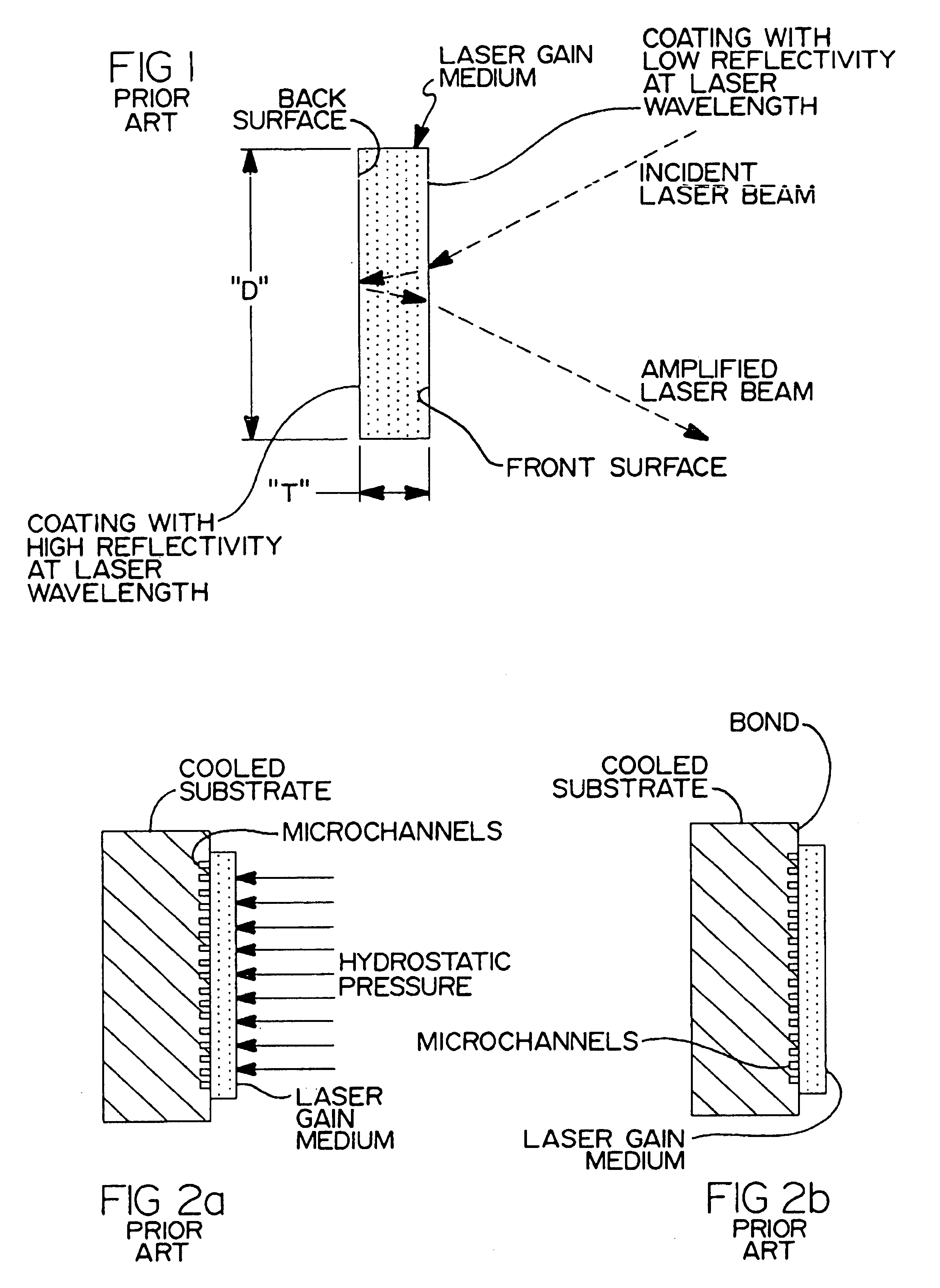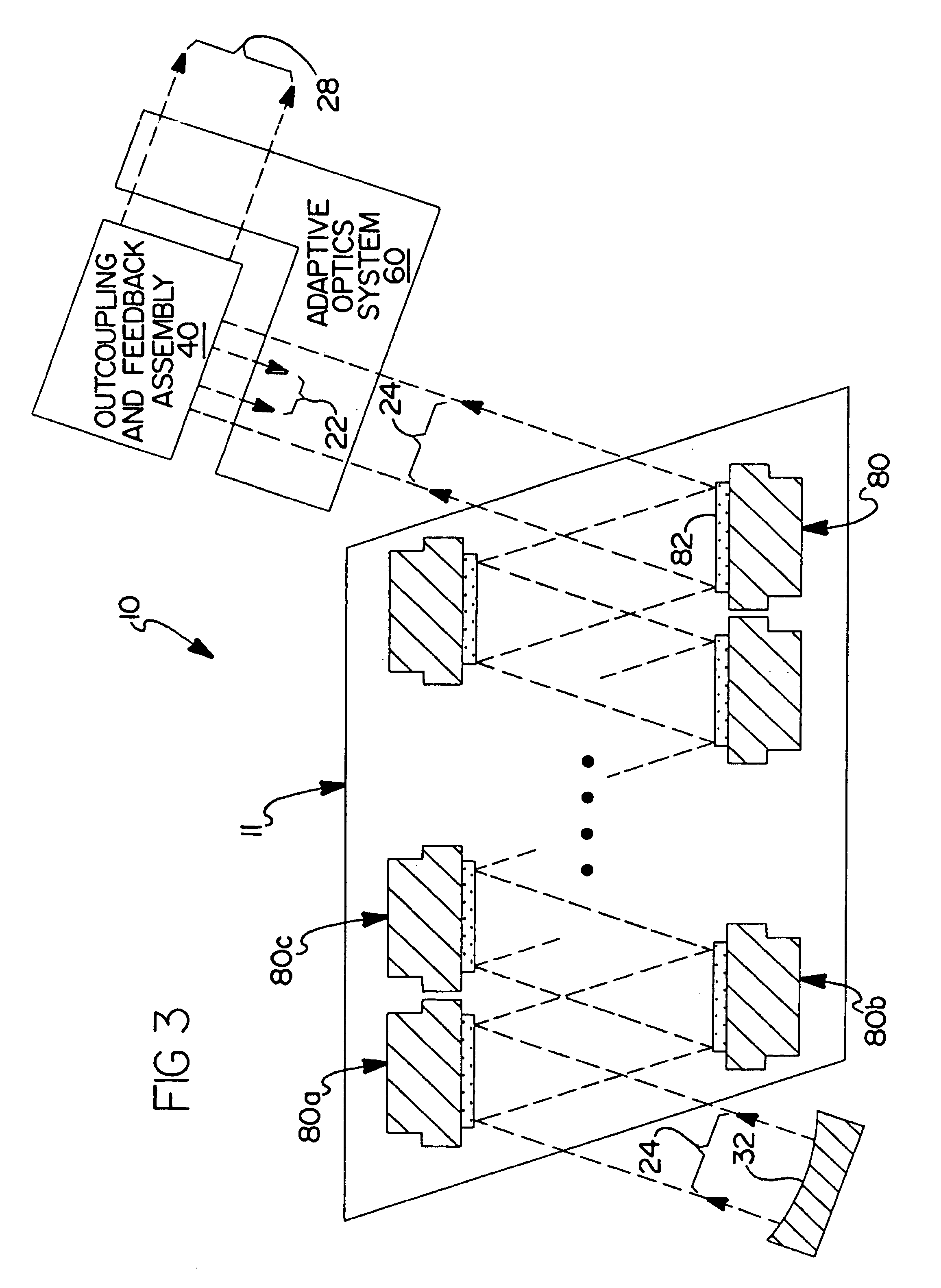Solid-state laser oscillator with gain media in active mirror configuration
a laser oscillator and gain media technology, applied in laser cooling arrangements, laser details, optical resonator shape and construction, etc., can solve the problems of reducing the beam quality, reducing the design flexibility of the beam, so as to improve the design flexibility, and improve the effect of transverse mode control
- Summary
- Abstract
- Description
- Claims
- Application Information
AI Technical Summary
Benefits of technology
Problems solved by technology
Method used
Image
Examples
first embodiment
[0079]Referring now to FIG. 7, there is shown a solid-state laser oscillator 100 in accordance with a second alternative preferred embodiment of the present invention. The SSL oscillator 100 comprises a laser gain assembly 111 placed in a ring unstable resonator formed by mirrors 134,135, 136, 138, and outcoupling / feedback assembly 140. The laser gain assembly 111 is generally the same as that used with the present invention shown in FIG. 3.
[0080]A portion of the collimated laser beam 24 propagating from laser gain assembly 111 and entering the outcoupling and feedback assembly 140 is coupled out of the oscillator 100 forming an outcoupled laser beam 28. A portion of the laser beam 28 not coupled out of the oscillator 100 forms a feedback beam 22, which is directed by successive reflections from mirrors 136, 134, 135, and 138 back into the laser gain assembly 111. Mirrors 136 and 138 are preferably flat. Mirrors 134 and 135 are convex and concave, respectively. Their curvatures are ...
second embodiment
[0085]A variation of the present invention may use an alternate configuration of the beam expansion telescope. FIG. 9 shows a telescope beam expansion telescope 130a formed by mirrors 134a and 135a, both having concave surfaces. Mirrors 134a and 135a are suitable for receiving the collimated feedback beam 22 and expanding it into the collimated beam 24 with transverse dimensions suitable to fill the optical aperture in AMA modules 80 of the laser gain assembly 111. A ring unstable resonator employing this type of beam expander is usually referred to as a “negative branch.” One advantage of this configuration is that a filtering aperture 139 may be placed at the laser beam focus between mirrors 134a and 135b for the purpose of removing undesirable higher order TEM. Such an aperture may also be beneficial for suppressing an optical wave traveling around the ring resonator in the reverse (i.e., clockwise) direction. Other advantages include using mirrors having a shorter radius of curv...
fifth embodiment
[0092]End sections 502a and 502b may have apertures as may be required, for example, to allow passage of a laser beam, electrical wiring and coolant connections. Aperture 509 in end section 502b is an example of such an aperture for the passage of a laser beam. When practiced with the present invention, central opening 508 may be used to allow passage of a laser beam (for example, between mirrors 134 and 136, and 135 and 138a), and / or electrical wiring and coolant connections.
[0093]FIG. 14 shows an optical bench 600 of alternate construction. Optical bench 600 comprises two annular end sections 602a and 602b similar to end sections 502a and 502b used with the optical bench 500 placed on a common axis of symmetry 604 and held in position by a plurality of struts 605. Struts 605 are anchored to the end sections 602a and 602b via joints 603. Preferably, end sections 602a and 602b are made of aluminum honeycomb or another suitably strong and lightweight material. Struts 605 are preferab...
PUM
 Login to View More
Login to View More Abstract
Description
Claims
Application Information
 Login to View More
Login to View More - R&D
- Intellectual Property
- Life Sciences
- Materials
- Tech Scout
- Unparalleled Data Quality
- Higher Quality Content
- 60% Fewer Hallucinations
Browse by: Latest US Patents, China's latest patents, Technical Efficacy Thesaurus, Application Domain, Technology Topic, Popular Technical Reports.
© 2025 PatSnap. All rights reserved.Legal|Privacy policy|Modern Slavery Act Transparency Statement|Sitemap|About US| Contact US: help@patsnap.com



